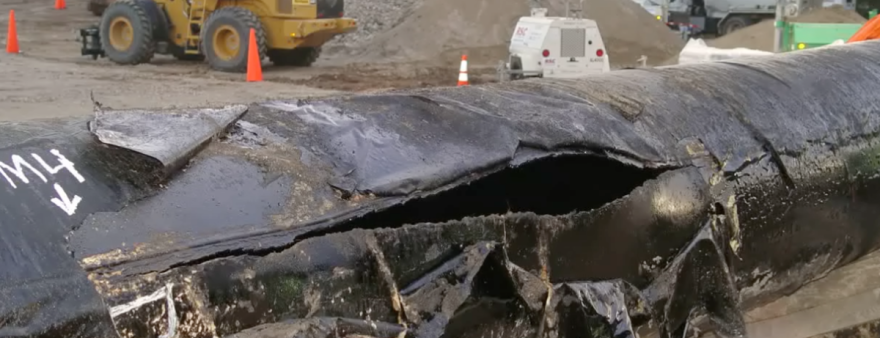The National Wildlife Federation wants the Michigan Department of Environment, Great Lakes, and Energy to look at whether drilling a tunnel to house Enbridge’s Line 5 under the Straits of Mackinac could cause damage.
The permits being considered now don’t include a regulatory review under the Great Lakes Submerged Lands Act.
“We are urging EGLE to really force Enbridge’s hand because Enbridge, as of now, feel they don’t need a Submerged Lands Act permit. And so, we’re really advocating that they require that of them,” said Beth Wallace, Great Lakes climate and energy director for the National Wildlife Federation.
EGLE said that during its review of the Enbridge Line 5 tunnel proposal, the top priority has been protecting the Straits of Mackinac and surrounding wetlands from adverse environmental impacts. The tunnel would hold a pipeline that carries petroleum products through an environmentally sensitive area, replacing the line that runs along the bottom of the straits.
EGLE added that The Great Lakes Submerged Lands Act is used primarily for construction projects on the bottomlands of the lake.
“The law and rules require EGLE to ensure that a project will have no more than a minimal impact on the public trust, adjacent riparian property owners, and the environment prior to issuing a permit,” the agency said in an emailed statement.
The NWF argues that a Great Lakes Submerged Lands Act review is critical due to the grave risks to the Great Lakes and the people and wildlife who rely on them.
“Could the (Mackinac) bridge be impacted by this? Could the existing pipeline be impacted by this? We already know there are significant cultural sites in that area that the Indigenous nations are working hard to protect,” Wallace said.
The NWF said in a release that “according to the state’s own experts, the tunnel would be bored through unstable rock, risking catastrophic collapse, not just of the tunnel, but of the lakebed itself.”
The tunnel was proposed to house a new segment of Line 5 under the roughly four-mile-stretch across the Straits of Mackinac which connects Lake Michigan and Lake Huron.
EGLE is taking comments regarding the permits and has scheduled virtual meetings for a question-and-answer session and a formal public hearing. You can find more information about that here.

There’s concern among some environmental groups, business groups, and Native nations that the 72-year-old Line 5 twin pipelines sitting on the lakebed of the straits could be damaged or rupture, as Enbridge Line 6b did 15 years ago. That resulted in more than 840,000 gallons of oil spilling into Talmadge Creek and the Kalamazoo River, contaminating more than 35 miles of river.
Experts say an oil spill in the straits could contaminate Michigan shorelines on both the Lake Michigan and Lake Huron coasts.
Editor's note: Enbridge is among Michigan Public's corporate sponsors.








